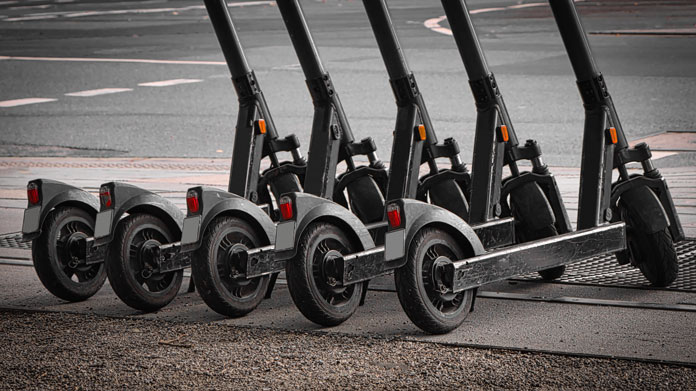Sustainable business models are becoming more and more popular and at the same time offer many interesting advantages. You may have heard of...

products in the past
In recent years, producers and manufacturers have focused on selling their products in one-off transactions. This is what we now call the linear economy. Customers are the owners of a physical product and producers are no longer responsible for taking care of the product. Since these companies have no incentive to make the best possible product, they get the most benefit from selling as much as possible.
What is different about Product as a Service?
Product as a Service (PaaS), also known as product-service systems, is a combination of products accompanied by services. Additional functions or service contracts for repair or replacement are added to the product. With PaaS, products are offered in subscription models that are offered with attached services.
Customers subscribe to the product and pay recurring fees. PaaS companies have more ongoing engagement with tighter customer support. As ownership is not transferred, there is great potential for circularity as the company is now responsible for making a better product.
The transition from product to full-service commitment ensures that the customer lifecycle is extended and secured by the associated services. Physical products are combined with services and software to oversee the customer process.
Products on subscription
Instead of paying a one-time fee, customers subscribe to the products and pay a weekly, monthly, or annual fee, and the product is then delivered as an experience or an additional service. Most of the products that we experience every day come as a kind of product as a service.
Is this like renting products? Partially yes, but Product as a Service is associated with additional advantages for the customer. It's a completely different experience. The customer can expect the manufacturer to take care of the product and take it back to give it a new life.
How did Product as a Service start?
PaaS is not a new business model. In fact, it's been around for quite some time, but it hasn't been applied in these new contexts of circular business models that are being made more possible by digitization, IoT, and circularity. Product as a Service has also attracted interest from manufacturers/producers to increase the profitability of their products, strengthen customer relationships and open new, sustainable lines of business.
circular economy
Product as a Service is a completely different economic model than the traditional linear models (take-make-dispose or discard). With a linear model, the product ends up in the trash as soon as the customer no longer needs it. With a circular model, the product returns to the manufacturer where it can be recycled and given a new life. This is one way Product as a Service connects to the circular economy model and why it is particularly valuable for companies looking to become more sustainable.
Is the PaaS model sustainable?
PaaS helps manufacturers become more sustainable! Manufacturers still own the product and therefore the residual value, they have an influence on the design and can make the products easier to remanufacture and thus get a second life.
The customer has a subscription for the use of the product - so to speak a "rent" instead of a purchase. If the customer wants to return the product, the manufacturer can pick it up and reuse some parts or materials of the product to build the product again. In this way, the product remains at its highest value over a longer period of time, and profitability is increased in the long term. Products that can be dismantled and some parts reused are more likely to contribute to the circular economy.
The benefits of PaaS
PaaS offers benefits for both customers and manufacturers. For customers, PaaS turns big purchases into smaller spending and allows them to recoup the cost of the product over its lifecycle. In addition, the customer no longer bears the risk of product failure or the responsibility for maintenance, since both are usually included in the service.
In addition, PaaS can help the customer to optimize their own use of the product. Finally, PaaS ensures that the customer is not left with outdated devices as the service includes upgrades. We're already seeing this in the smartphone industry, where users subscribe to a cell phone plan that includes yearly upgrades to the latest and greatest phones, the cost of which is included in the monthly fee.
On the manufacturer side, PaaS delivers a consistent revenue stream, which is a more sustainable business model. Additionally, they can see how the product is being used in the field, which could provide insight into product reliability, design, and potential feature improvements. Manufacturers can use data analysis to find ways to improve the value customers receive, ultimately creating additional revenue for both the customer and the manufacturer.
Which industries are taking advantage of PaaS?
Some of the industries that are reaping great benefits from the PaaS model are primarily product manufacturing companies. Such industries are:
• Consumer Electronics
• Consumer Goods
• Home & Furniture
• Medical Technology
• Mobility
• Lighting
• Original Equipment Manufacturers (OEMs)
Why are customers interested in a PaaS model?
• Flexibility to pay/upgrade their payment options monthly
• More customer support and loyalty
• Lower upfront cost of purchasing a product
• Ability to get new products when the subscription expires
How is Product as a Service developing?
PaaS platforms include standard and custom applications that save manufacturers from having to build everything from scratch. In many cases, vendors can turn their products into services in just a few months, with no infrastructure investment and minimal risk. Custom dashboards are created with a drag-and-drop interface that often requires no programming skills, and allows engineers to monitor devices in the field over secure internet channels with any connected device.
Now is the right time for manufacturers and producers to consider whether they need to move from selling products to offering product subscriptions. Customers are now transitioning to buying products in a circular way and the sustainable business will continue to grow over time.















COMMENTS